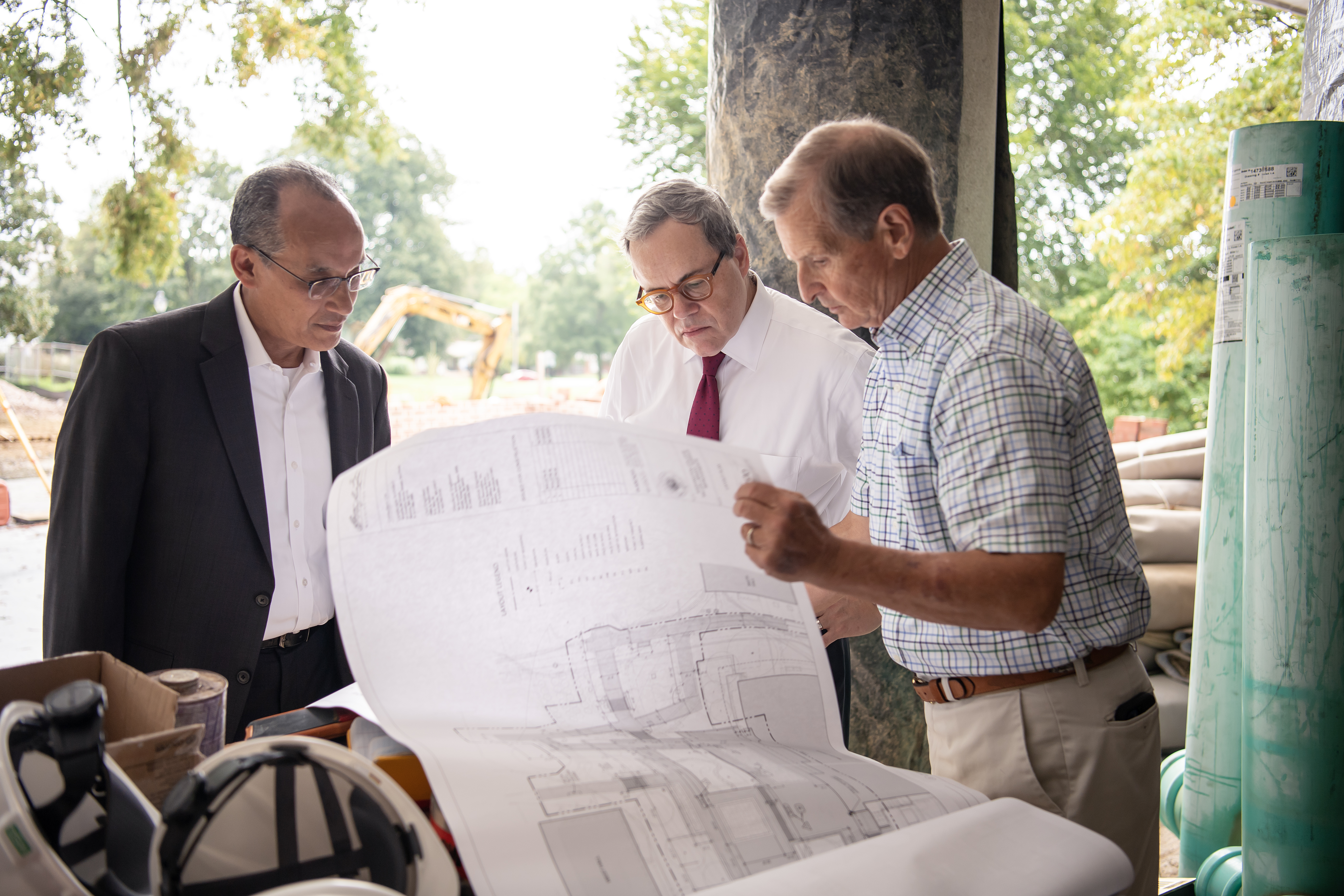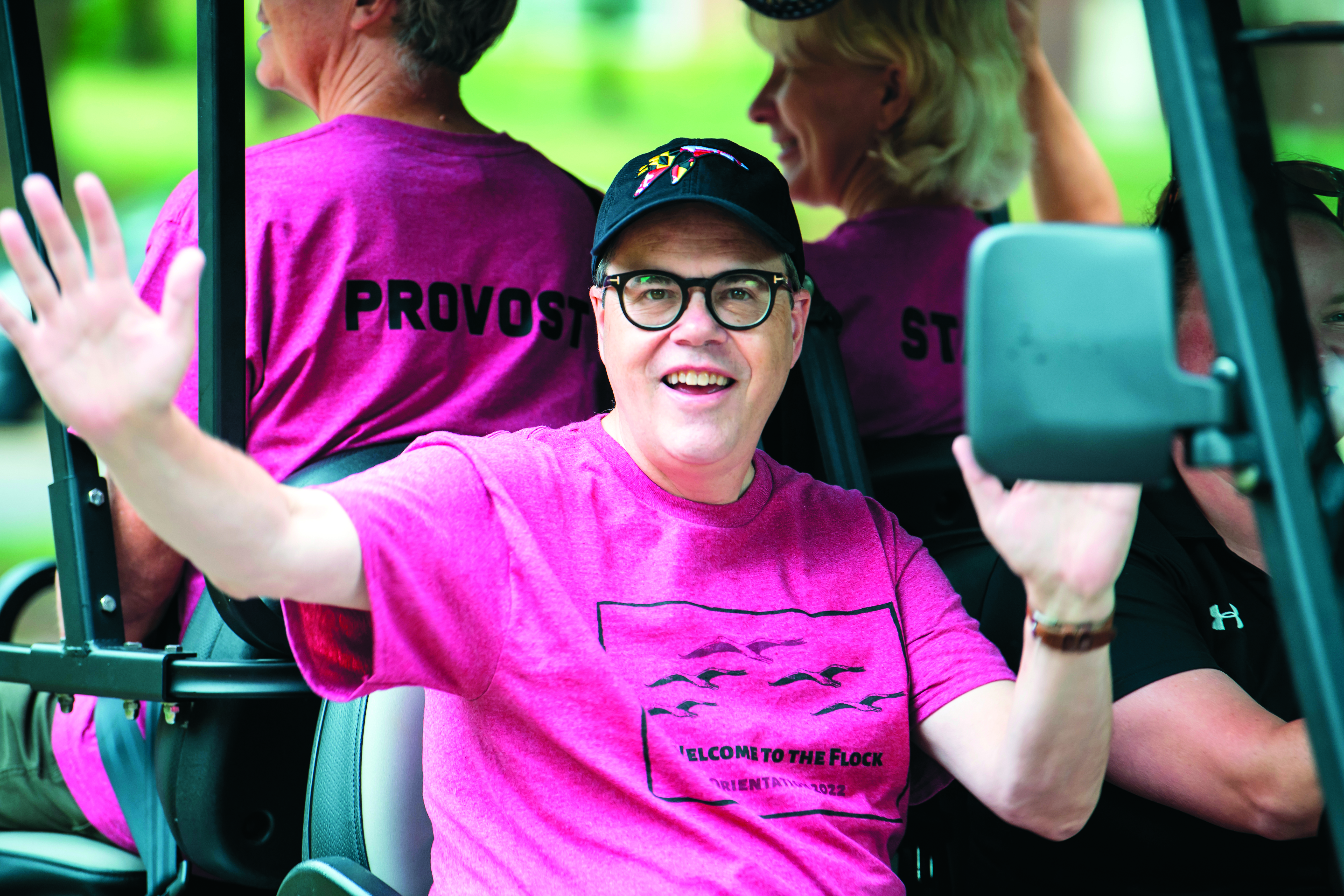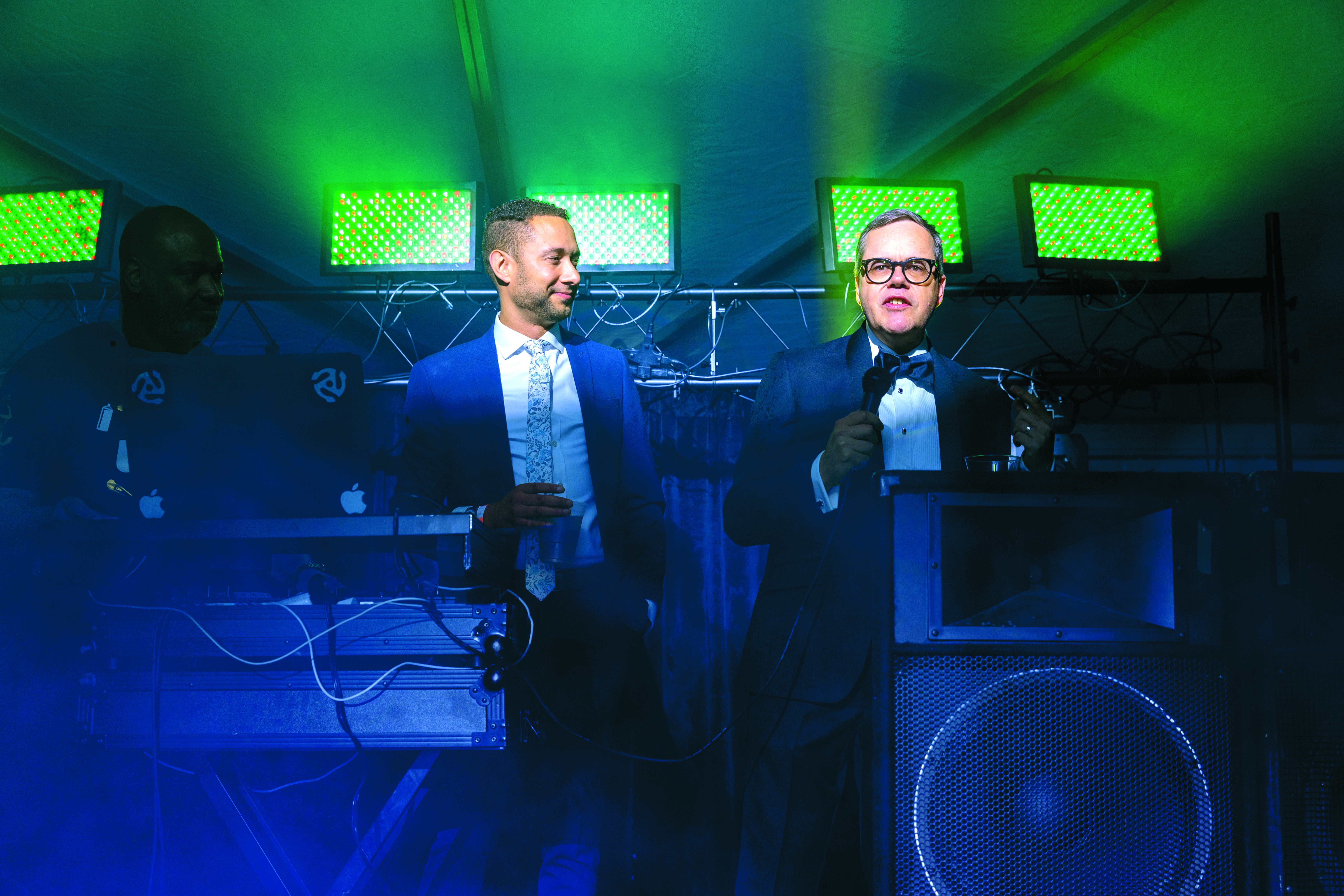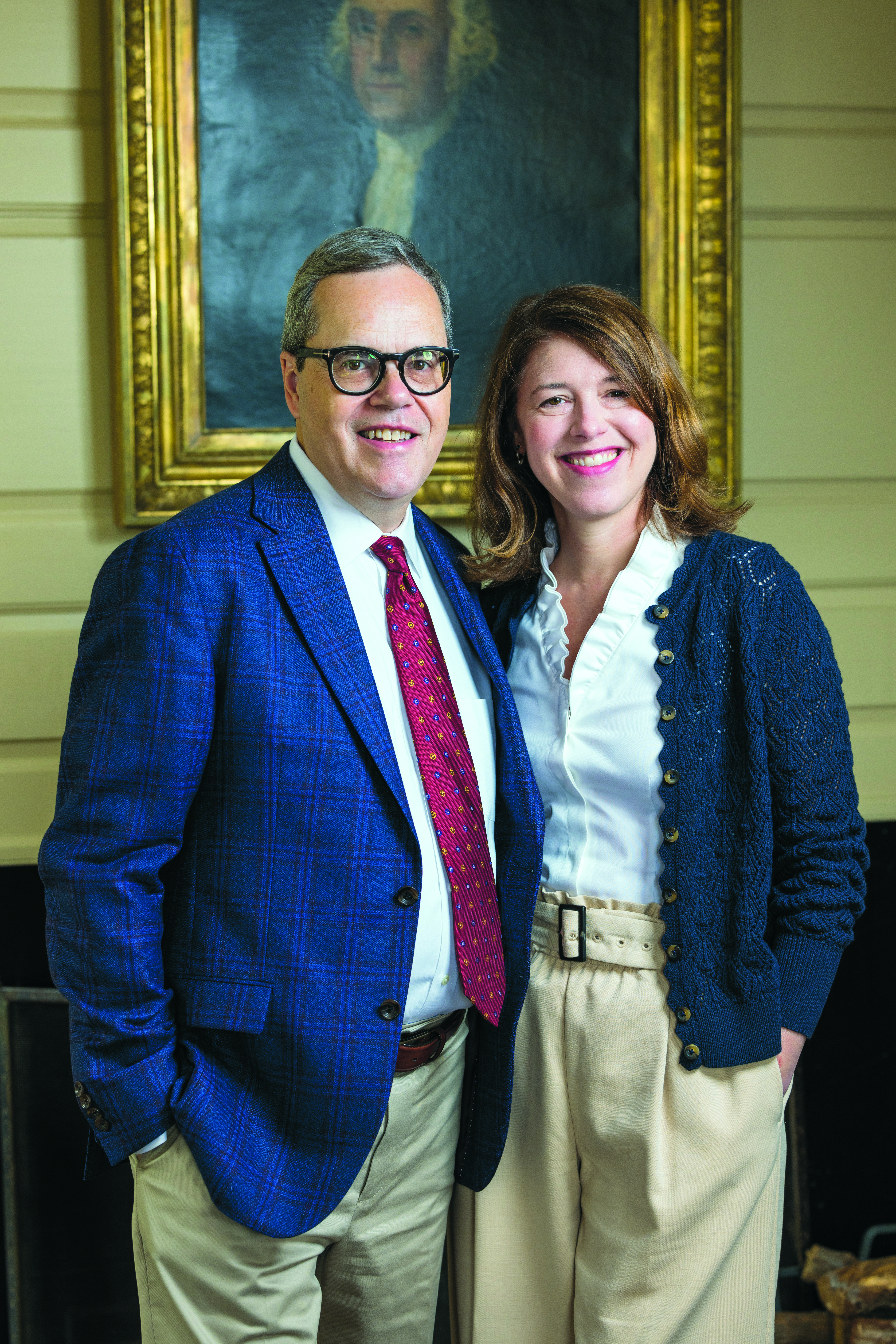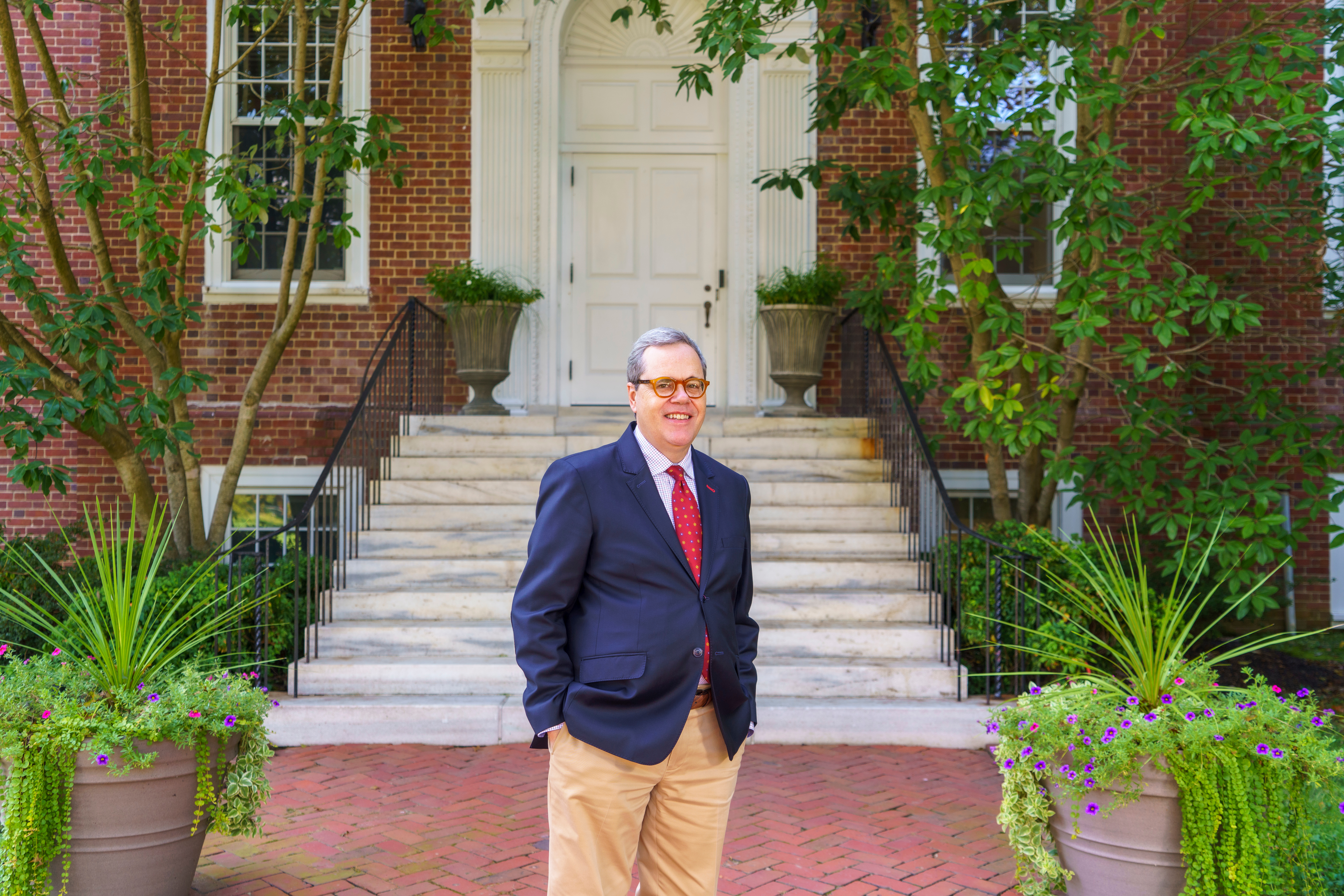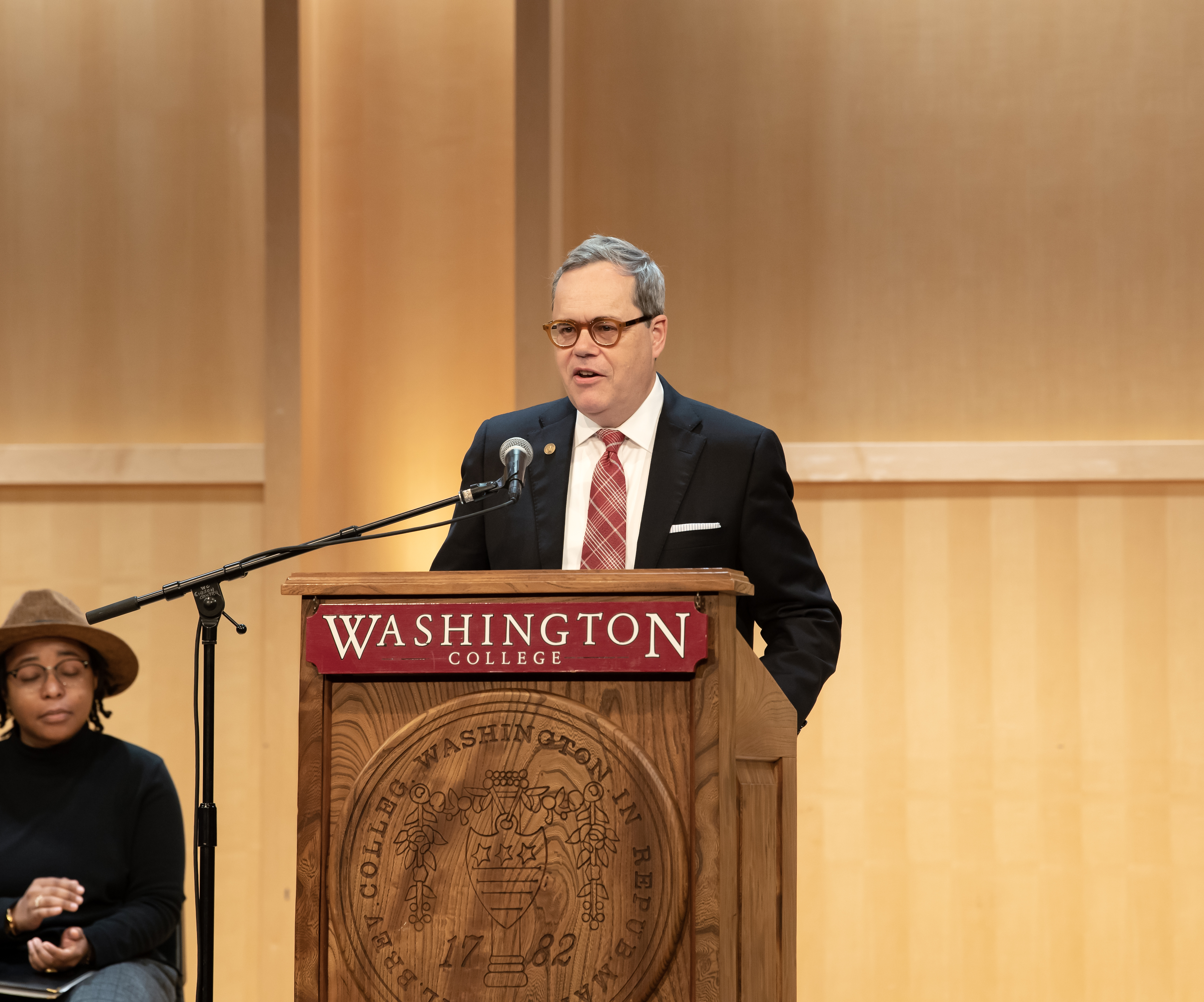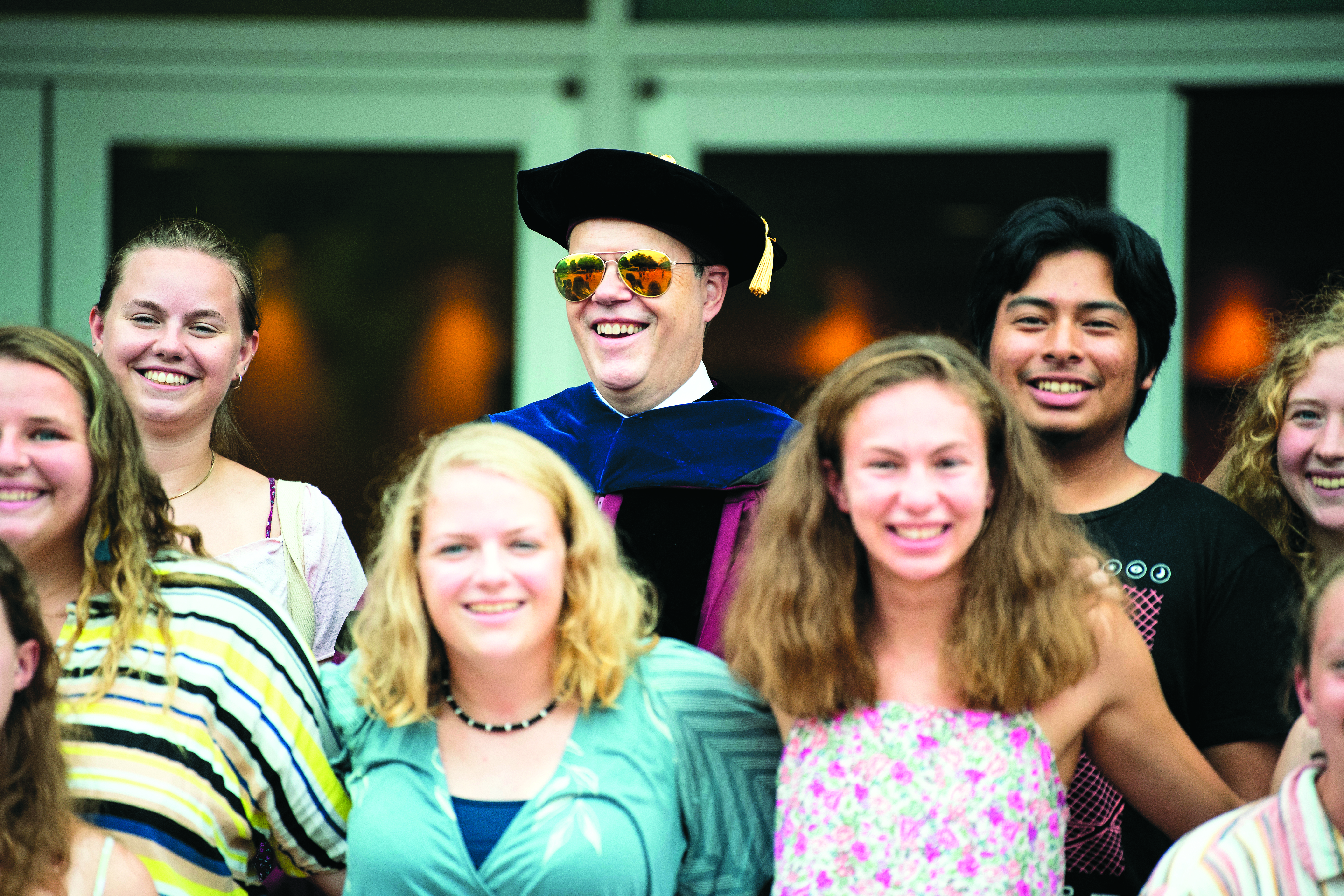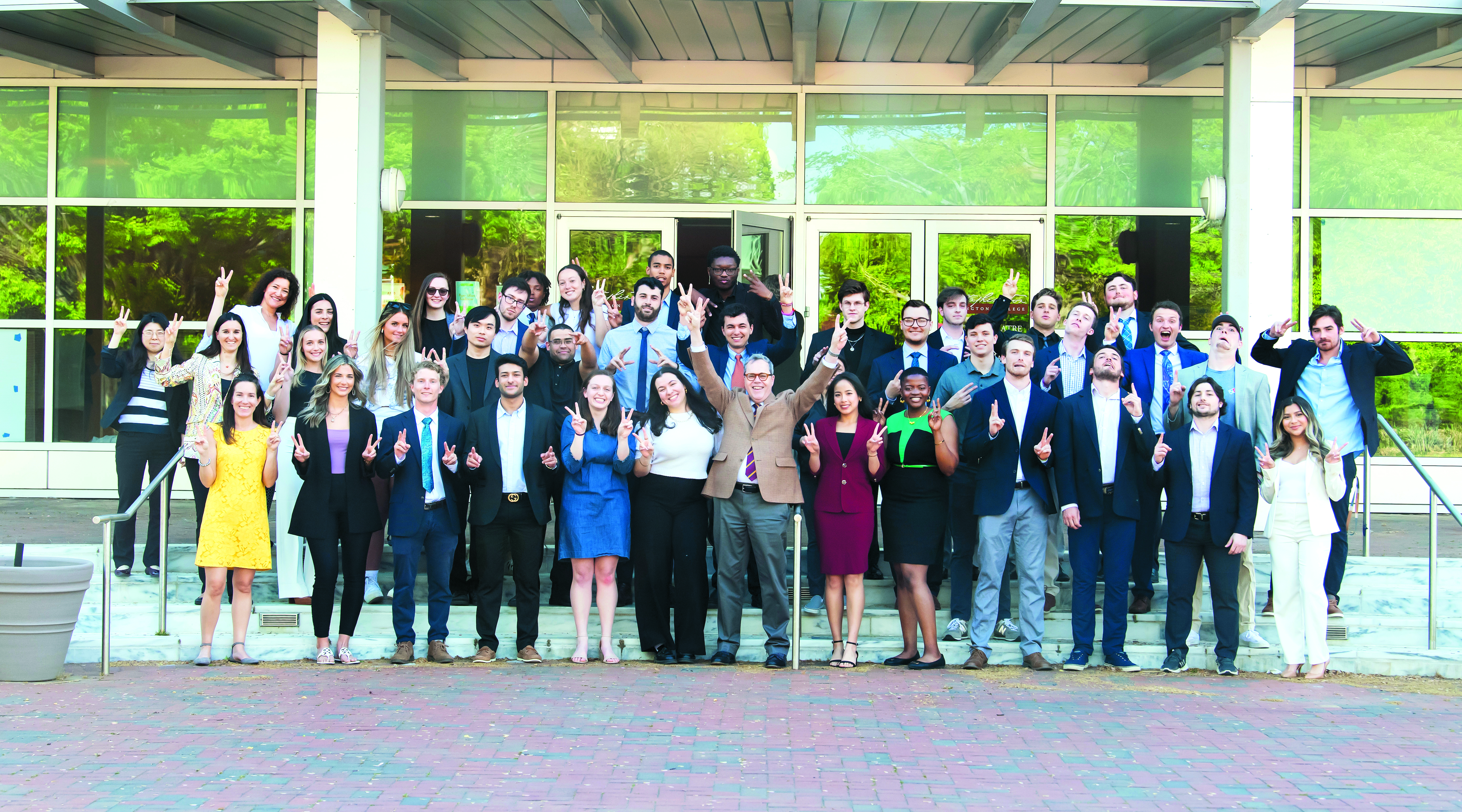
The “People First” President
The “People First” President
Sosulski, with thick, round glasses and a boyish, welcoming smile, favors a sports jacket and shirt open at the collar most days but is equally at home in a business suit with oxford shirts and matching ties. While he enjoys donning full academic regalia for convocation and other official engagements, you can also find him wearing shorts during student move-in day and lederhosen for an annual Oktoberfest celebration with faculty and staff at Hynson-Ringgold House.
Despite that extensive wardrobe, Sosulski is not a chameleon; he is a man who is comfortable in his skin, and no matter his attire or the occasion, his easy manner, gentle wit, and sincerity put people at ease. He exudes the quiet confidence of a man who believes in himself and his vision yet is humble enough to listen and consider the views of others. More importantly for the College, he believes in the institution's future because he believes profoundly in the abilities, good intentions, and quality of the people who make up the College — students, alumni, parents, families, faculty, and staff, current and past.
Sosulski inherited an institution where an unusual run of leadership turnover combined with fiscal issues to fray nerves and relationships. “Due to the management of that budget crisis, there was some healing to be done,” he said. His logic is simple — the institution thrives when the Washington College community thrives. “I knew our faculty and staff were my number one priority when I arrived.”
In his first two years, he has made good on these words. He immersed himself in the Washington community, holding extensive discussions with students, faculty, staff, alumni, donors, and local community members. He then brought in a consulting firm to help evaluate the College based on additional community feedback. From there, he worked with his leadership team to take action to make the College a better institution for all its people.
Improving the environment for faculty and staff is a large part of the strategy. Sosulski is ambitious, believing the College should be recognized as one of the top liberal arts colleges in the country. To progress toward that goal, Washington must retain and attract top faculty, staff, and administrators.
One of his first steps included the restoration of wage increases and the resumption of retirement matches for all College employees, both of which had been suspended to save money. Supporting faculty and staff is more than a feel-good exercise. One of Sosulski's core beliefs is that people are the key assets of the institution. “Understanding that we need to take care of the people who make the Washington experience possible in order for us to fulfill our mission is a huge thing,” he said. Competitive salaries and benefits are only the beginning of his plan to keep and recruit the brightest and best.
Equally crucial to moving the College in the right direction is ensuring the student experience is excellent. “The other thing that I'm very proud of is that we immediately invested $20 million in the quality of the student experience.” His administration oversaw the renovation of several residence halls (see page xx), the refurbishment of the dining hall and hiring of a new food vendor, the renovation of the library terrace (see page xx), and the relaying of the bricks on Cater Walk among many projects explicitly aimed at improving the student experience.
Giving employees a salary boost and giving students better facilities were certainly positive first steps. But if such actions were not financially sustainable, they would have been, at best, stopgaps; at worst, they could have added to the financial burden the institution was already shouldering. Funding these steps required a synchronous and parallel effort to put the financial and enrollment houses in order.
